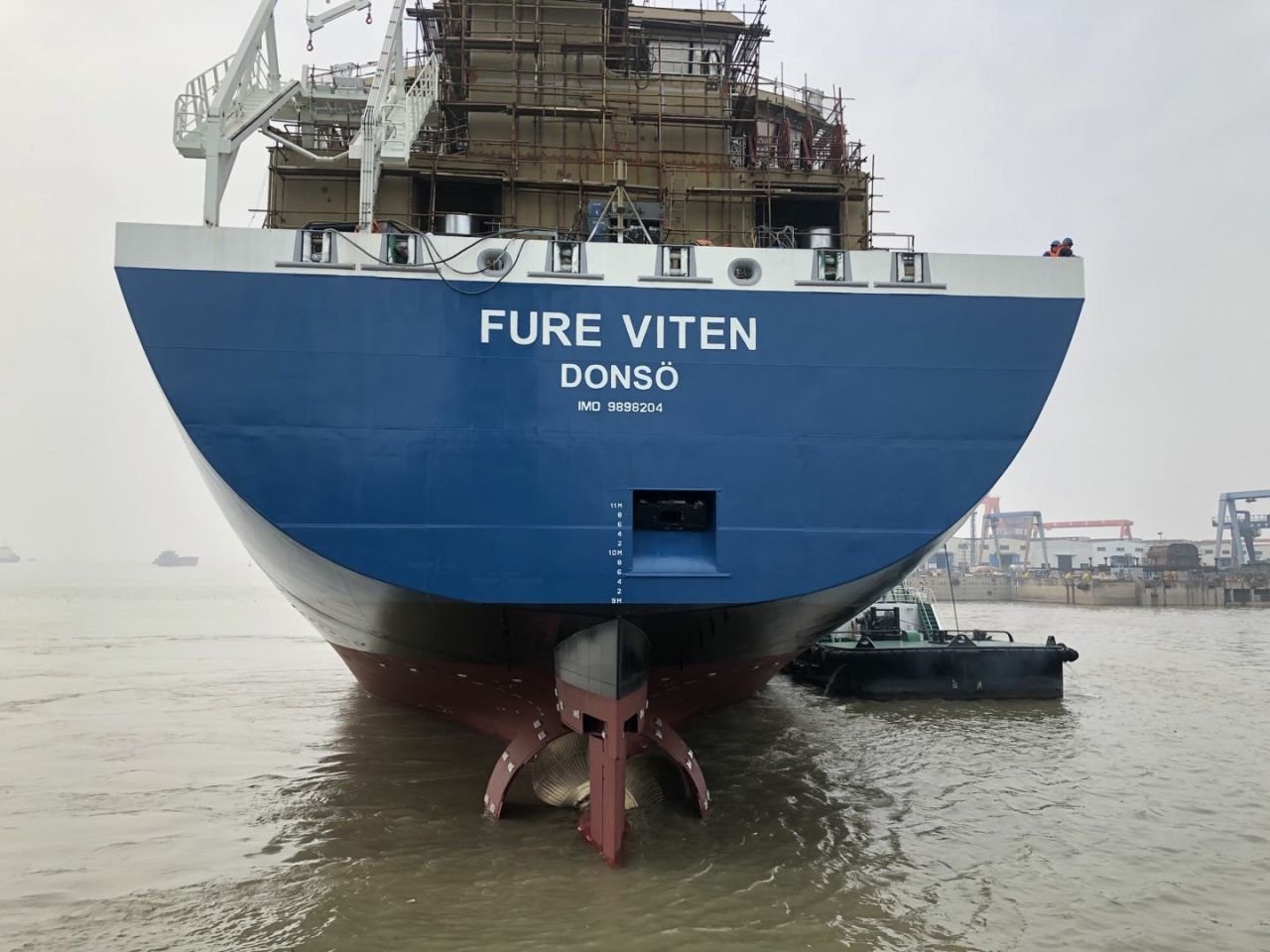In April 2018, the International Maritime Organization (IMO) set an objective to reduce absolute GHG emissions from shipping by at least 50% by 2050 compared with a 2008 baseline. The IMO regulates emissions from new vessels through the EEDI – energy efficiency design index, where a lower value means fewer emissions. Today, the requirement for a vessel the size of Fure Viten is to reach below 9.37 points – but Furetank says, due to the use of gas propulsion and a unique combination of fuel-saving solutions, the Fure Viten has reached a value of 4.65 points and considered as “already meeting the emission targets for 2050.”
 “We will operate the ships we build now for the coming 20 years, so we have put a lot of effort into investigating what is the best possible technology that we can invest in today. Climate change is a reality and we believe that politicians mean what they say. Thus, if we are to survive as a shipping company in the future, we must do our absolute best to reduce our climate and environmental impact,” said Lars Höglund, CEO of Furetank.
“We will operate the ships we build now for the coming 20 years, so we have put a lot of effort into investigating what is the best possible technology that we can invest in today. Climate change is a reality and we believe that politicians mean what they say. Thus, if we are to survive as a shipping company in the future, we must do our absolute best to reduce our climate and environmental impact,” said Lars Höglund, CEO of Furetank.
As informed, the new design features batteries which help reduce the use of auxiliary engines, a ducted propeller increases thrust and reduces power requirement, an improved hull shape minimizes drag, and the main engine and shaft generator use variable frequency to increase propeller efficiency and reduce fuel consumption.
Fure Viten, as well as its sister vessel Fure Vinga, is an ice class 1A tanker equipped with dual-fuel engines capable of running on liquefied biogas (LBG) or liquefied natural gas (LNG) with a cargo capacity of 20,300 cubic meters. Both vessels are the first tankers in Europe that are fully equipped to operate the energy-demanding cargo pumps with 6.6 kV high voltage shore power.

Fure Viten is the latest vessel in a series of eight vessels so far, designed by Furetank and FKAB Marine Design in collaboration with Wärtsilä. With the new propulsion and technical optimizations, the vessels are expected to reduce carbon emission by 55%, while the emissions of acidifying sulfur oxide (SOx) and hazardous particles (PM) are to be completely eliminated.
“The next step will be to operate the ships completely without fossil fuels. We are in the process of securing the supply of larger quantities of biogas within a year or so, through an exclusive agreement with a supplier. My view is that in 2030 we will run these vessels largely on LBG with zero fossil emissions”, added Höglund.
Minh Duc













